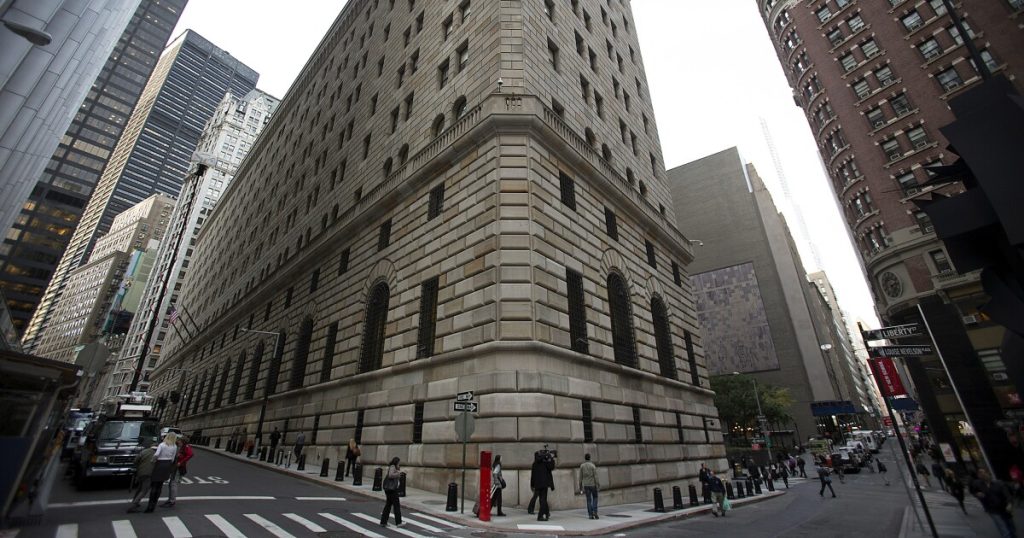Bloomberg News
The Federal Reserve’s policy rate is a long way from its lowest point, but markets remain concerned about a return to zero interest rates, according to findings from the Federal Reserve Banks of New York and San Francisco.
In an
“Compared with the past decade, current data show that expected levels of future interest rates are high,” the letter notes. “Nevertheless, [zero lower bound] risk remains significant over the medium to long term, similar to levels observed in 2018, due to recent elevated uncertainty.”
The letter was co-authored by New York Fed President John Williams, San Francisco Fed Vice President Thomas Mertens and New York Fed research analyst Sophia Cho.
The note, which was
According to this analysis, markets were pricing a roughly 9% probability that interest rates will fall to zero within the next seven years as of May 27. That figure has generally been trending down since 2022, when the Fed
The report notes that the level of perceived ZLB risk is on par with 2018, which was about a year before the Fed began lowering interest rates in an attempt at post-financial crisis normalization. But, it adds, the uncertainty index in 2025 is nearly double where it was seven years ago. This dynamic makes a return to zero rates more likely today, even though expected rates are higher now than in 2018, the report said.
“While a higher expected interest rate level decreases the probability of reaching the ZLB, a higher uncertainty increases it. Empirically, shifts in the expected level of interest rates appear to be the primary driver of changes in ZLB risk,” the paper states. “Currently, seven-year-ahead ZLB risk is comparable to that observed in 2018, even though the expected interest rate level is higher. This reflects that uncertainty is higher today than it was in 2018.”
Rates falling to the ZLB is a perennial point of concern for policymakers and financial market participants alike because lowering interest rates is the Fed’s main lever for stimulating economic activity. Reaching it leaves only negative interest rates — which have a
In past episodes — namely following the collapse of the subprime mortgage market in 2008 and during the COVID-19 pandemic — the Fed resorted to zero interest rates and hundreds of billions of dollars in quantitative easing, while other central banks employed negative interest rates to deliver additional economic support.
Relying on asset purchases can have other distortionary effects that can be difficult to unwind. Key markets, including those for mortgage-backed securities and Treasuries, are still coping with the loss of the demand that resulted from the Fed’s shifting from quantitative easing to quantitative tightening.
As the paper notes, having policy rates at or near the ZLB can be disruptive to asset pricing and interest rates. Because projecting longer-term conditions is more difficult than near-term forecasts, being at or near the ZLB puts pressure on longer-term yields, potentially leading to a “downward sloping” yield curve — a result that is detrimental to the core banking business model of capitalizing the spread between long-term lending rates and short-term borrowing costs.
With the current target range for the federal funds rate between 4.25% and 4.5% and Fed officials
Even over medium- and long-term horizons, the probability of hitting the lower bound is on the lower end of the past 15 years, the authors find. But, they add, the uncertainty factor raises the threat level.
“While the expected level of interest rates at the seven-year horizon is about a full percentage point higher than in 2018, the current considerably elevated uncertainty offsets it and results in a comparable likelihood of reaching the ZLB,” they write.

